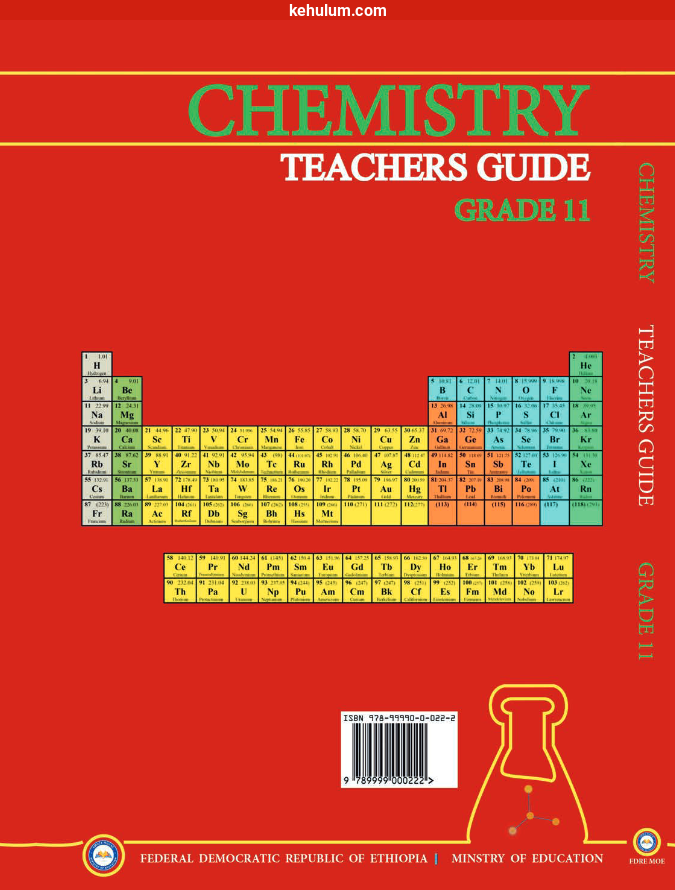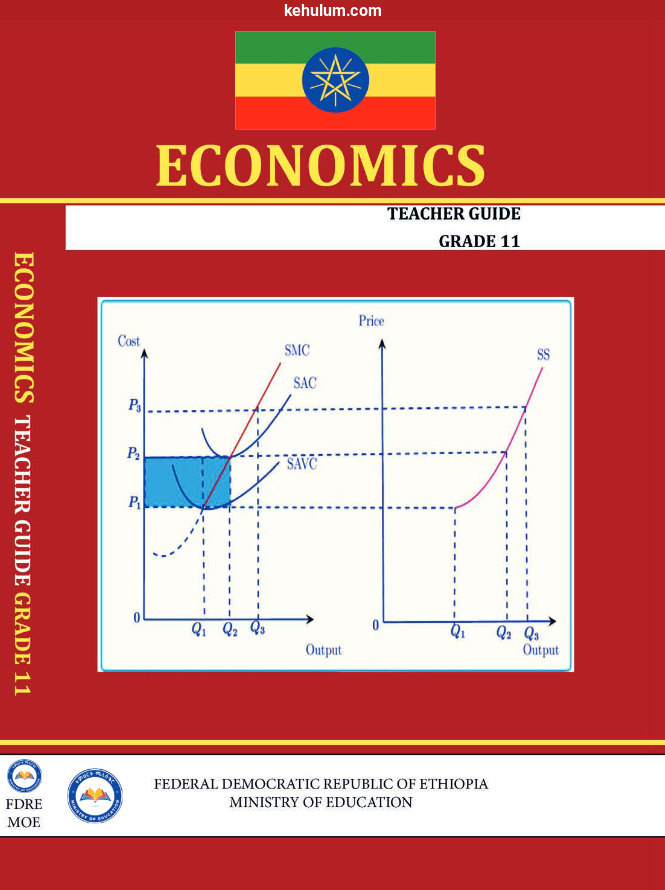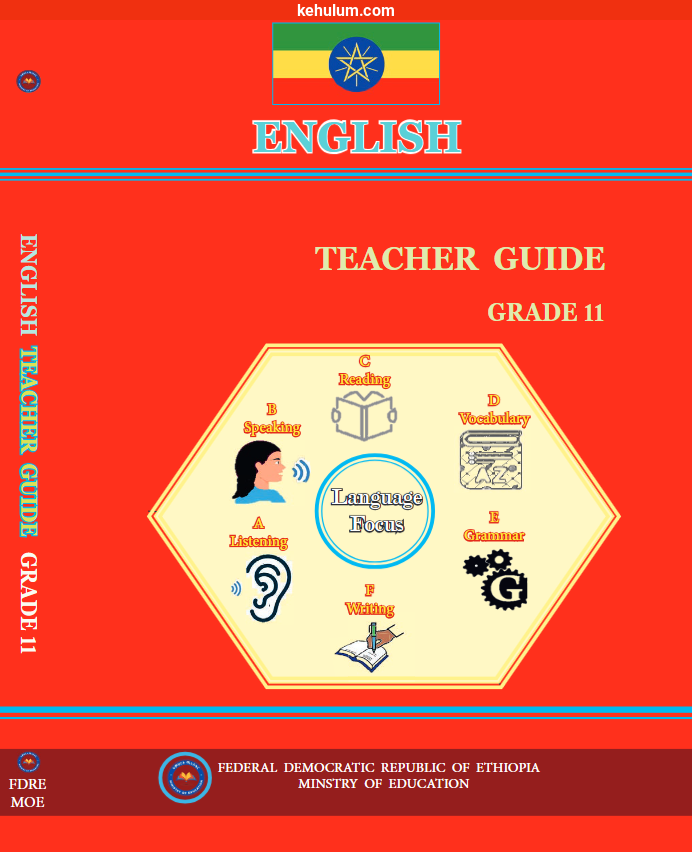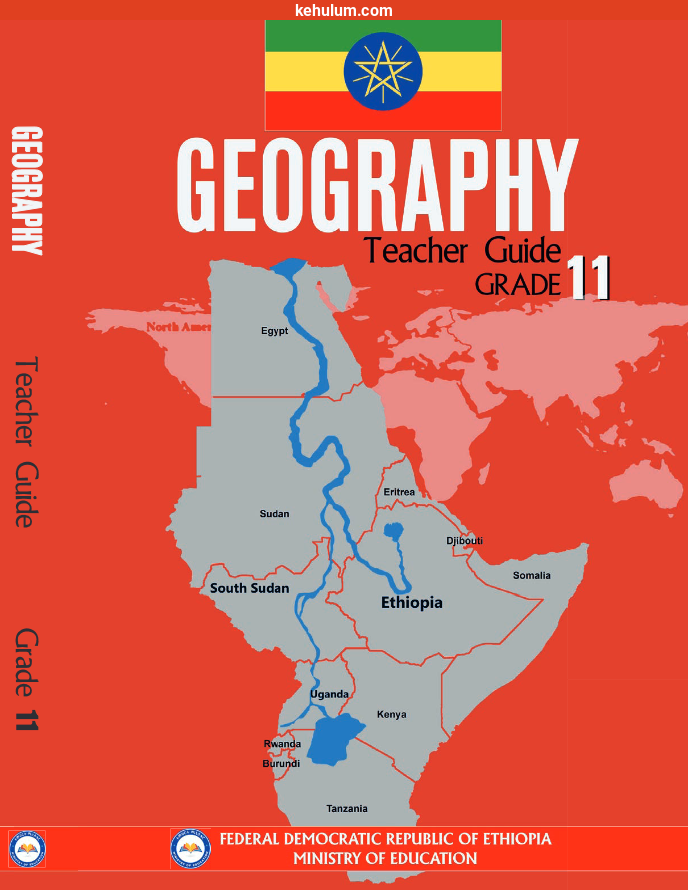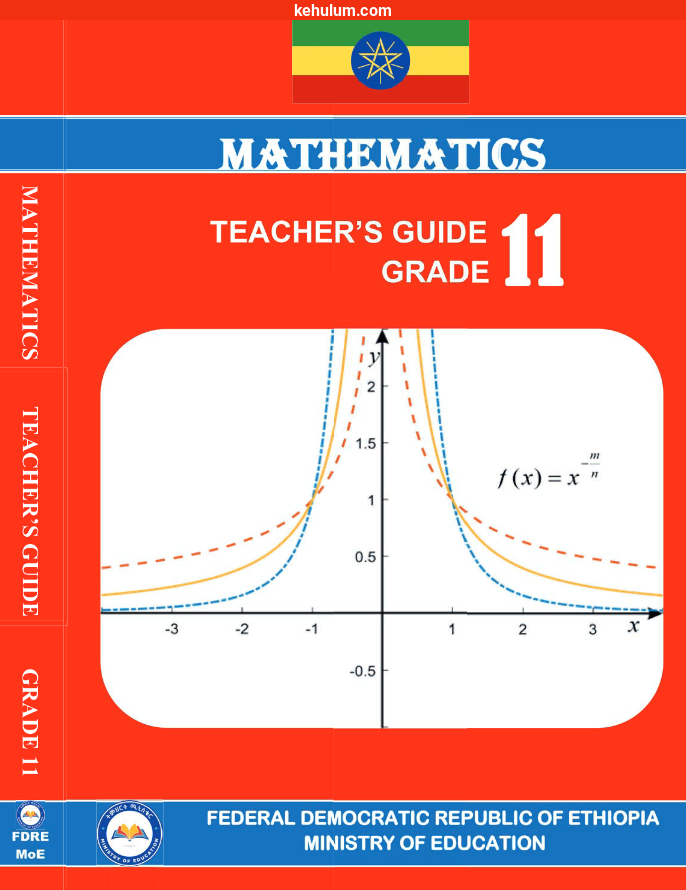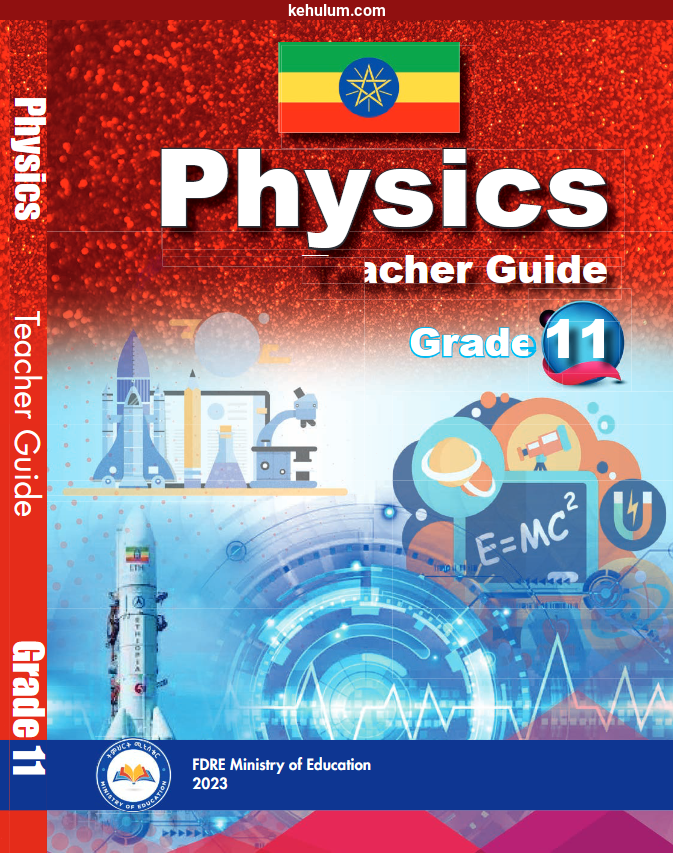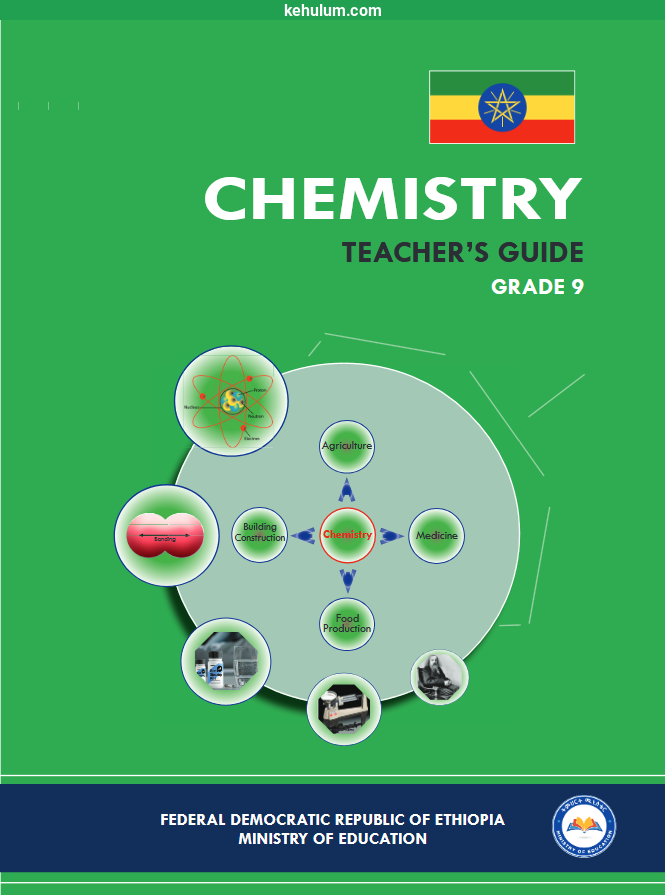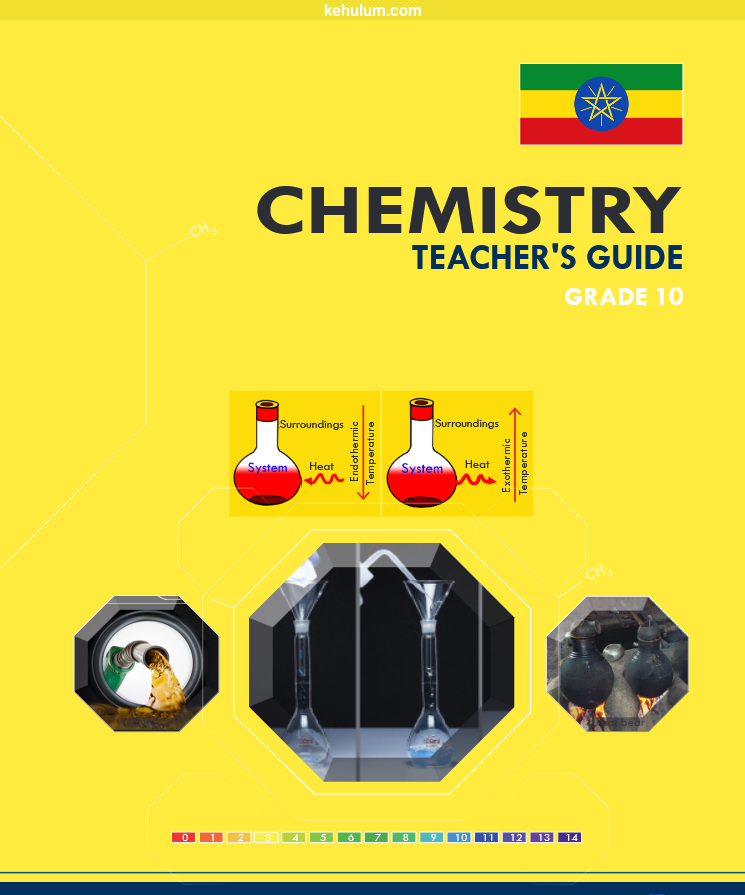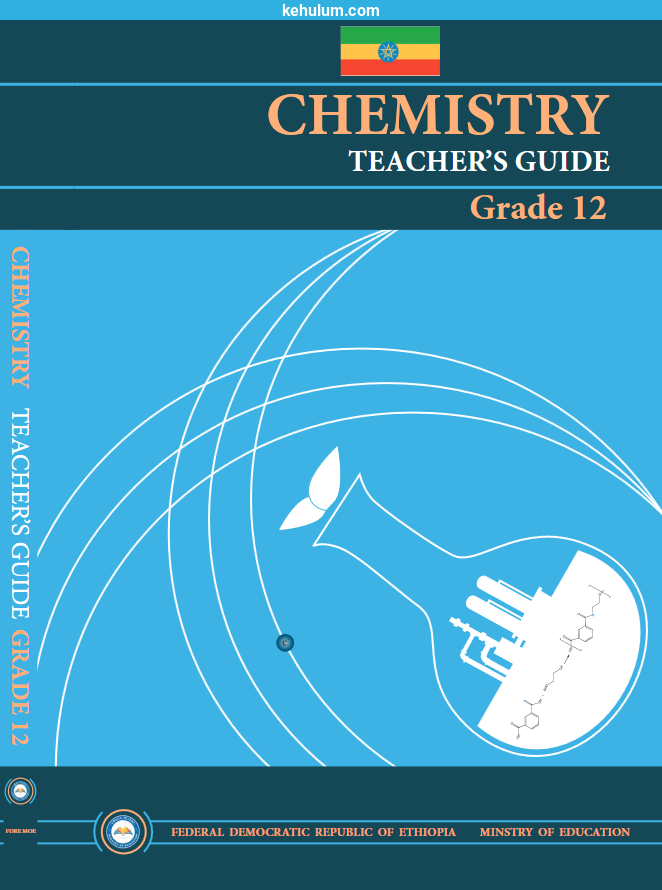Advertisement
Ethiopian Grade 11 Chemistry Teacher’s Guide (New curriculum) - Overview
The Ethiopian New Curriculum Grade 11 Chemistry Teacher’s Guide, published in 2023 by the Ministry of Education, is an important resource for teachers implementing the new science curriculum. This guide includes over 200 pages, with a total of 6 units, that combine clear content with easy-to-follow teaching strategies. It offers practical examples from Ethiopia, lab ideas, and activities that encourage student participation. The focus is on helping students understand concepts rather than just memorizing facts. The file size is 29.7 MB. The guide has visuals and structured lesson plans that help teachers explain complex chemical topics in simple ways, making each lesson both engaging and meaningful
Writer / Authors
This Teacher’s Guide written by:
- Dr. Tsegaye Girma
- Dr. Abera Gure
Chapters
The Ethiopian New Curriculum Grade 11 Chemistry Teacher’s Guide consists of 6 instructional units. Each chapter helps teachers lead well-structured lessons by combining theory, real-world application, assessment techniques, and inquiry-based methods.
Unit 1: Atomic Structure and Periodic Properties of the Elements
Teachers begin by exploring the evolution of atomic models—from Dalton to quantum mechanics. Lessons cover subatomic particles, electromagnetic radiation, Bohr’s model, and periodic trends, using visual aids and local analogies to clarify abstract ideas.
Unit 2: Chemical Bonding
This unit helps students understand ionic, covalent, and metallic bonding. Teachers guide learners through electron-dot structures, molecular geometry, and bonding theories like VSEPR and molecular orbital theory, reinforced through 3D models and simulations.
Unit 3: Physical States of Matter
Teachers explore kinetic theory and the properties of gases, liquids, and solids. Practical demonstrations, such as boiling point changes or observing gas diffusion, support the transition from theory to tangible understanding.
Unit 4: Chemical Kinetics
This chapter equips teachers to explain how and why reactions occur at different rates. Concepts like activation energy and catalysts are linked with experiments (e.g., temperature’s effect on reaction rate) and industrial relevance.
Unit 5: Chemical Equilibrium
Teachers help students grasp reversible reactions and equilibrium constants. Real-world connections, like the Haber process, demonstrate industrial applications. The unit provides diagrams, simulations, and group activities to test hypotheses and model shifts in equilibrium.
Unit 6: Some Important Oxygen-Containing Organic Compounds
This comprehensive unit covers alcohols, ethers, aldehydes, ketones, carboxylic acids, esters, and lipids. Teachers introduce IUPAC naming, functional group properties, and synthesis through relatable examples—such as soap, cooking oils, or ethanol fermentation—making organic chemistry culturally relevant.
Advertisement
Frequently Asked Questions
How many units are covered in the Ethiopian Grade 11 Chemistry new curriculum teacher's guide?
The Teacher's Guide supports a total of 6 instructional units based on the new Ethiopian curriculum.
How many pages are in the Ethiopian Grade 11 Chemistry new curriculum teacher's guide?
The Teacher's Guide contains 200 pages filled with detailed instructional strategies.
What is the file size of Ethiopian Grade 11 Chemistry new curriculum teacher's guide?
The Teacher's Guide PDF file size is 29.7 MB, easily accessible on all devices.
When is the Ethiopian Grade 11 Chemistry new curriculum Teacher's Guide published?
The Teacher's Guide was published in 2023.
How do I download the Ethiopian Grade 11 Chemistry new curriculum Teacher's guide PDF for free?
Simply click the download button on the page
Is the Grade 11 Chemistry teacher's guide available for both old and new curriculum?
Yes, kehulum.com provides teacher guides for both Old and New Ethiopian curriculum.
Related new curriculum chemistry Teacher's Guide
Advertisement

